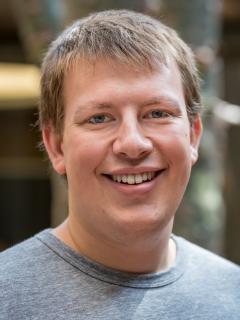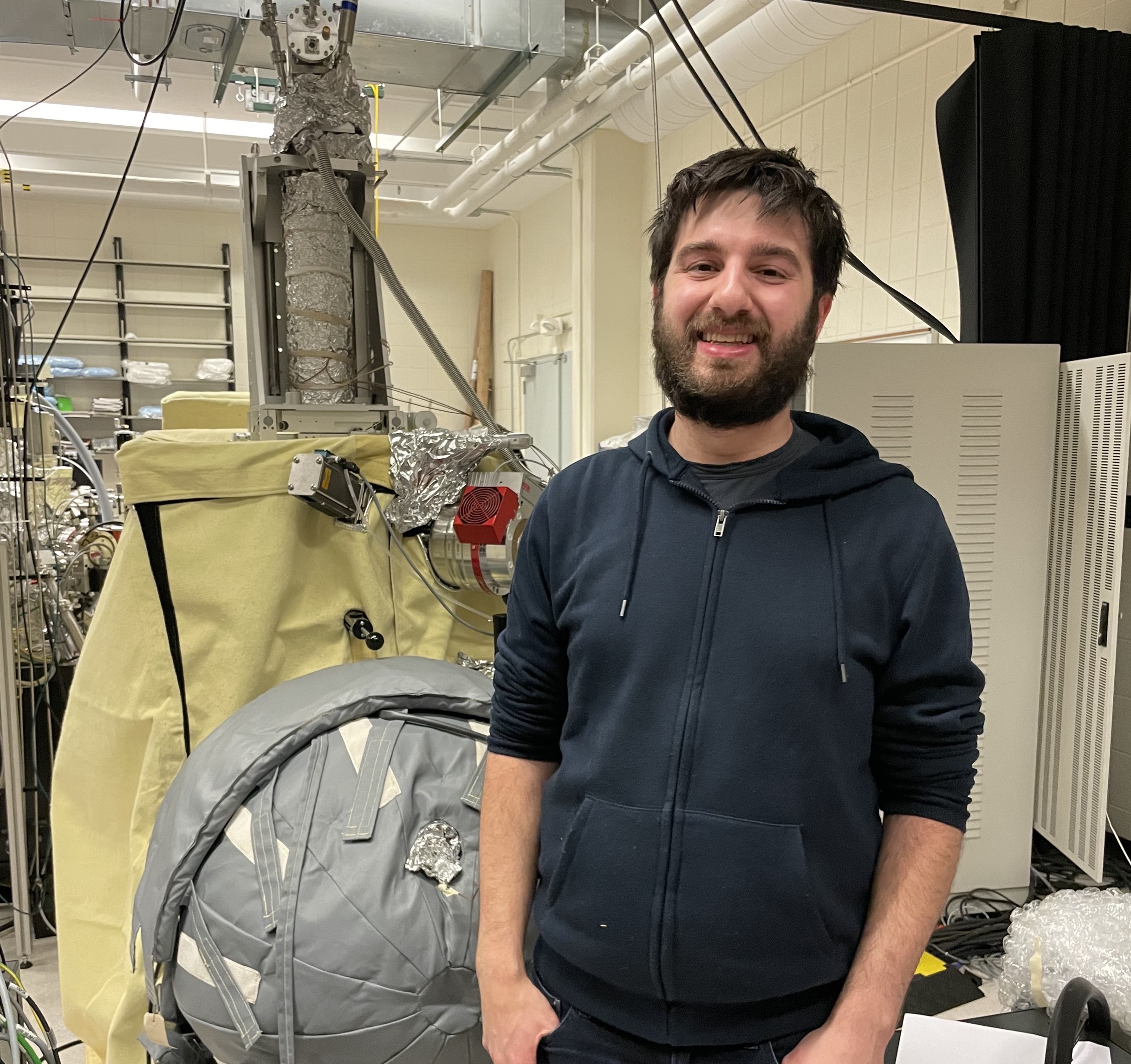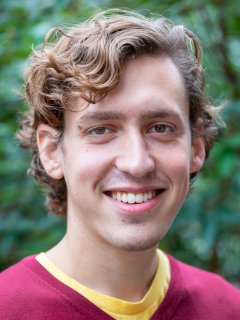About
The Forum
The New Jersey Quantum Matter and Information Forum (NJQMI Forum) is a joint initiative organized by Princeton and Rutgers University graduate students to foster long term friendships within the quantum condensed matter and quantum information physics research community, in New Jersey.
The forum will be held as a one day event every year, alternating between Princeton and Rutgers. We welcome all those interested in quantum condensed matter, or quantum information (both theory and experiments) to come along.Hopefully we can all learn from each other and maybe even spark some collaborations together!
Itinerary for
Saturday 23rd April 2022
- 10:00 - 10:25 : Arrive at Jadwin Hall, Princeton
- 10:30 - 11:15 : 1st invited speaker talk: Prof. Sanfeng Wu (Princeton)-Moire Luttinger Liquids in Two-Dimensions
- 11:45 - 12:30 : 2nd invited speaker talk: Prof. Piers Coleman (Rutgers)- Dark-Matter Challenges of the Solid State
- 12:45 - 13:30 : Catered lunch
- 13:35 - 15:35 : Small room graduate student and postdoc talks
- 15:45 - 17:15 : Informal review paper discussions and social time
(a) Topological Superconductivity Room A10
(b) Spin Liquids Room 303
(c) Moire materials Room 343: https://www.nature.com/articles/s41578-021-00284-1 https://www.nature.com/articles/s41567-020-0906-9
(d) Many-body localization, thermalization and entanglement - 4th Floor PCTS - 17:30 - 17:45 : Closing remarks and goodbyes
Organizing
Committee
Liam L.H. Lau
Rutgers 1st YearI am a physics graudate student at Rutgers University, jointly advised by Piers Coleman and Ananda Roy. I am interested in the interface between condensed matter and quantum information physics. I fancy myself as a theorist, but I find a lot of joy in talking to people about experiments...

Tyler A. Cochran
Princeton 5th YearI’m a physics graduate student at Princeton University, working in the group of M. Zahid Hasan. My research utilizes synchrotron-based photoemission probes to diagnose electronic properties of single crystals. Recently, my attention has been focused on how to tune electronic correlations to give rise to topologically nontrivial states in otherwise conventional crystals.

Lilit Sargsyan
Rutgers 2nd YearI am a physics graduate student at Rutgers University. My research advisor is Emil Yuzbashyan. Currently I am working on inverse Landau-Zener optimization problem. I am also interested in quantum information science and superconducting qubits.

Jiayi Hu
Princeton 2nd YearI'm a 3rd year graduate student in Professor Ong's group at Princeton University. My current research interest is low temperature thermal transport on quantum materials.

Michael Terilli
Rutgers 3rd YearI am an experimental physicist working in Jak Chakhalian’s group at Rutgers University. I am interested in strongly-correlated materials, especially thin film oxides. My goal is to use spectroscopy techniques to find novel electronic and topological properties in these materials.

Michael Scheer
Princeton 3rd YearI'm a graduate student at Princeton University studying condensed matter theory with Biao Lian. My recent work is focused on twisted bilayer graphene. Before graduate school, I worked as a quantum engineer and research scientist at Rigetti Computing.
Invited Talk
Titles
Talk topics could be about anything: your current project, your March Meeting talk, or even ideas you're seeking collaboration on. The main goal is to learn about each other and the research going on in the field.
-
Triplet pairing mechanisms from Hund’s-Kondo models: applications to UTe2 and CeRh2As2
Tamaghna Hazra, Rutgers
A number of heavy-fermion superconductors share the common structural motif of two or more U/Ce sublattices in the unit-cell separated by an inversion center. We present a pairing mechanism for triplet superconductivity that is enabled by such a locally non-centrosymmetric structure. Extremely high upper critical fields in these materials suggest the importance of local pairing scenarios with coherence lengths comparable to the lattice spacing. For instance, UTe2 remains superconducting at fields above 60T, suggesting a coherence length shorter than 2nm. A legitimate driver of these local triplet pairing correlations is atomic Hund's coupling, which leads to pre-formed triplet pairs between the electrons trapped inside local moments. The sublattice degree of freedom allows these onsite spin-triplet pairs to acquire odd-parity form factors as they Kondo-hybridize with the dispersive electrons, leading to a pairing instability in a triplet channel. We show how the Hund's coupling modifies the Kondo hybridization leading to an anisotropic ``triplet'' Kondo coupling. Using a simple two-channel Kondo model, derived from a minimal mixed-valent construction with Hund's coupling, we demonstrate the emergence of odd-parity spin-triplet superconductivity in a mean-field calculation. This unifies the emergence of triplet superconductivity with the Kondo hybridization in a coherent framework, and we present support for this hypothesis from existing experiments.
A Bosonized Model For Critical Fermi Surfaces
Tomer Ravid, Rutgers
An exactly solvable, simple field theory for two-dimensional critical Fermi surfaces ("strange metals") is provided, based on Haldane's formalism of higher-dimensional bosonization. The field theory reproduces the standard results for the boson self-energy and the fermion self-energy at low energies, and can be derived from the standard microscopic theory without relying on any large-N expansions and without assuming random couplings. In the talk I will motivate the model and explain the general dependence of the boson's self energy on frequency and wavevector based on a simple intuitive argument.
Charge density wave order in kagome metal AV3Sb5 (A= Cs, Rb, K)
Shangfei Wu, Rutgers
The kagome metal AV3Sb5 was recently discovered to host both superconductivity and charge density wave (CDW) order. Here, we use Raman scattering to probe the lattice dynamics of AV3Sb5. We identify several new A1g and E2g phonon modes related with V and Sb atoms as well as alkali atoms emerging in the CDW state. The symmetry decomposition analysis for these emerging modes indicates the C3 symmetry is preserved in the CDW phase. The limited number of new phonon modes indicates inversion symmetry is also preserved in the CDW phase. The detailed temperature evolution of these modes’ peak frequency, half-width-at-half-maximum, and integrated area support two successive phase transitions in CsV3Sb5: the first one with the primary-like order parameter appearing at TS = 94 K and the second one with secondary-like order parameter appearing at T∗ = 80 K. Moreover, the T-dependence of the integrated area for these modes show two type of behavior below TS: the low energy modes shows a plateau-like behavior below T∗ while the high energy modes monotonically increase below TS. These two types of behaviors below TS can be captured by a Landau free energy model incorporating the interplay between the primary-like and secondary-like order parameters.
Magic angles in twisted bilayer graphene near commensuration: towards a hyper-magic manifold
Michael Scheer, Princeton
Helicoid Arcs and Linked Quantum Loops
Tyler Cochran, Princeton
Autoregressive probabilistic models for sampling fermion occupation numbers
Stephan Humeniuk, Rutgers
A numerically exact method will be presented for reproducing fermionic quantum gas microscope experiments in equilibrium. By employing nested componentwise direct sampling of fermion pseudo-density matrices, as they arise naturally in determinantal quantum Monte Carlo (QMC) simulations, a stream of pseudo-snapshots of occupation numbers on large systems can be produced. This allows to compute arbitrary distribution functions in Fock space and, from a practical point of view, facilitates the computation of complicated conditional correlation functions.
For showcasing the method, we compute the local spin environment around an isolated hole in the Hubbard model as well as conditional two-point correlation functions around the hole and compare with recently published results of a quantum gas microscope experiment and with QMC simulations for the t-J model, finding good agreement in both cases.
References:
S. Humeniuk and Y. Wan, Numerically exact quantum gas microscopy for interacting lattice fermions, Phys. Rev. B 104, 075155 (2021).Hofstadter Topology and Reentrant Correlated Insulators in Twisted Bilayer Graphene
Jonah Herzog-Arbeitman, Princeton
The topology, under the name of the quantum Hall effect, was first discovered when "trivial" systems were exposed to magnetic flux. Since then, we have understood that Bloch bands have a large and well-studied topological classification that does not require magnetic field and instead relies on symmetries. This begs the question, is there something to be learned from studying crystalline topological insulators in strong flux, where both magnetic field and the intrinsic topology are present? We show that the topology of a crystal is in fact the most important predictor of its Hofstadter butterfly (the fractal spectrum of a crystal in magnetic field) and can be understood very generically within the topological quantum chemistry paradigm. We then focus on twisted bilayer graphene where the full Hofstadter spectrum has been obtained in a recent experiment, unveiling field-driven topological phase transitions and reentrant correlated phases due to an approximate Hofstadter periodicity.
-
Thermal properties of Kitaev material BaCo2(AsO4)2
Jiayi Hu, Princeton
Engineering magnetic topological insulators in Zintl compounds
Nicodemos Varnava, RutgersRenyi Entropy and Negativity in the Ising CFT
Gavin Rockwood, Rutgers
Topological Field Theory of Non-Hermitian Systems
Kohei Kawabata, Princeton
Non-Hermiticity gives rise to unique topological phases without Hermitian analogs. However, the effective field theory has yet to be established. Here, we develop a field-theoretical description of the intrinsic non-Hermitian topological phases. Because of the dissipative and nonequilibrium nature of non-Hermiticity, our theory is formulated solely in terms of spatial degrees of freedom, which contrasts with the conventional theory defined in spacetime. Our theory provides a universal understanding of non-Hermitian topological phenomena such as the unidirectional transport in one dimension and the chiral magnetic skin effect in three dimensions. Furthermore, it systematically predicts new physics; we illustrate this by revealing transport phenomena and skin effects in two dimensions induced by a perpendicular spatial texture. From the field-theoretical perspective, the non-Hermitian skin effect, i.e., the anomalous localization due to non-Hermiticity, is shown to be a signature of an anomaly.
Reference: K. Kawabata, K. Shiozaki, and S. Ryu, Phys. Rev. Lett. 126, 216405 (2021).Playing the parity game with the quantum Ising model
Vir B. Bulchandani, Princeton
The parity game is an example of a "quantum pseudo-telepathy game": by sharing a Greenberger-Horne-Zeilinger (GHZ) state before playing this game, the players can win with a higher probability than is allowed by classical physics. The GHZ state of N qubits is also the ground state of the ferromagnetic quantum Ising model on N qubits in the limit of vanishingly weak quantum fluctuations. Motivated by this observation, we examine the probability that N players who share the ground state of a generic quantum Ising model, which exhibits non-vanishing quantum fluctuations, still win the parity game using the protocol optimized for the GHZ state
Unconventional states of multiorbital impurities due to Hund's coupling
Victor Drouin-Touchette, Rutgers
-
Integrability and Time-Dependent Hamiltonians
Pradip Kattel and Abay Zhakenov, Rutgers
There are multiple one-dimensional strongly interacting systems that can be exactly solved by a method pioneered by Hans Bethe in 1931 to solve Heisenberg Model. The generalization of method now called Bethe Ansatz has been used to solve many important problems like various spin chain models, various spin-boson models, the Kondo Model, the Hubbard Model, the Leib-Liniger model, and many other interesting models. Recently some progress has been made in exact solution of time dependent many-body Hamiltonians. It occurs that whenever there is an integrability, there appears the Knizhnik-Zamolodchikov equation and Gaudin algebra. In this talk, we will discuss the notion of integrability first in time-independent models and then discuss what it means to exactly solve a time dependent Hamiltonian.
Meson Confinement in Spin Systems
Yicheng Tang, Rutgers
Thermal equilibrium and heating in periodically driven systems
Alan Morningstar, Princeton
Controlling Cavity-Mediated Superconductivity and Criticality by Engineering Quantum States of Light
Ahana Chakraborty, Rutgers
Recent success in coupling electrons in two-dimensional materials to the quantum electromagnetic field of optical cavities has opened up many exciting but yet unexplored avenues of quantum electrodynamics, among which one promising idea is to use the photons in the cavity to mediate pairing between electrons, inducing superconducting states with novel properties. An exciting prospect, that makes photons the more interesting mediator with respect to the phonons of the standard BCS paradigm, is to exploit state-of-the-art engineering of the quantum states of light to control superconductivity. A naturally emerging question, which remains still open, is whether one can enhance superconductivity by feeding the cavity with certain quantum states of the photons. This new playground for quantum many-body physics is at the same time exciting and theoretically challenging to describe, requiring us to develop new approaches merging quantum optics, condensed matter, and quantum-field-theory. We recently developed a non-equilibrium field-theory approach that allows to tackle this question. I will describe our current understanding of the problem focusing on how critical properties of the superconducting transitions can be manipulated by initialising the photons in non-thermal initial density matrices.
Refs:
[1] H. Gao, F. Schlawin, M. Buzzi, A. Cavalleri, and D. Jaksch, Phys. Rev. Lett. 125, 053602 (2020)
[2] Ahana Chakraborty and Francesco Piazza [Phys. Rev. Lett. 127, 177002 (2021)] [3] Ahana Chakraborty and Francesco Piazza [To appear in arXiv]Operator fusion from wavefunction overlaps: an orbifold CFT viewpoint
Yuhan Liu, Princeton
Given a critical quantum spin chain described by a conformal field theory (CFT) at long distances, it is crucial to understand the universal conformal data. One most important ingredient is the operator product expansion (OPE) coefficients, which describe how operators fuse into each other. It has been proposed in [Zou, Vidal, Phys. Rev. B 105, 125125] that the OPE coefficients can be computed from overlaps of low-energy wavefunctions of the spin chain. In this work, we establish that all conformal data including central charge, conformal dimensions, and OPE coefficients are encoded in the wavefunction overlaps, with universal finite-size corrections that depend on the operator content of the cyclic orbifold CFT. Thus this method allows us to numerically compute all the conformal data based solely on the low-energy eigenstates. The predictions are verified in the Ising and XXZ model. As an application, we study the recently proposed Haagerup model built from the Haagerup fusion category.
-
Moire Luttinger Liquids in Two-Dimensions
Sanfeng Wu, Princeton
10:30 - 11:15Interacting electrons in metals are typically described by the well-established Fermi liquid theory. One known exception is the interacting one-dimensional (1D) conductors, in which electrons only move along one spatial direction and are generally described by the Luttinger liquid model instead at low temperatures. The 1D Luttinger liquids host a set of interesting phenomena, including the power law suppression of the density of states at Fermi energy and the spin-charge separation. Can the novel Luttinger liquid phenomena, typically expected in a 1D system, emerge in a two-dimensional (2D) system at low temperatures? In this talk, I aim to address this question based on our recent experiments on twisted bilayer WTe2 (tWTe2). I will argue that the tWTe2 moiré superlattice provides an excellent platform for studying emergent Luttinger liquids in an anisotropic 2D system and may be related to various coupled-wire models.
Dark-Matter Challenges of the Solid State
Piers Coleman, Rutgers
11:45 - 12:30At the turn of the 20th century, physicists faced an uncanny range of unsolved problems: simple questions, such as why hot objects change color, why matter is hard and why the sun keeps on shining, went unanswered. These problems heralded a new era of quantum physics. One of the truly remarkable lessons of discovery in this heroic era, was the intertwined nature of research: in the lab and in the cosmos, for solving superconductivity really did help answer why the sun keeps on shining, while looking at the stars provided clues as to why matter is hard.
The challenges facing us today, epitomized by our failure to quantize gravity, the mysteries of dark matter and energy, challenge physics to its core. I will discuss the less well-known dark matter challenges of the solid state, epitomized by the strange metals with linear resistivity that accompany high temperature superconductivity, the discovery of insulators with Fermi surfaces and the phenomenon of Quantum criticality and the quantum physics of information. I will argue that these laboratory-scale problems challenge our fundamental understanding of emergent quantum matter in ways that are no less intertwined with their cosmological counterparts than they were a hundred years ago.
Participants
List
Names and emails of participants, so people can keep in contact
-
TBA
-
TBA